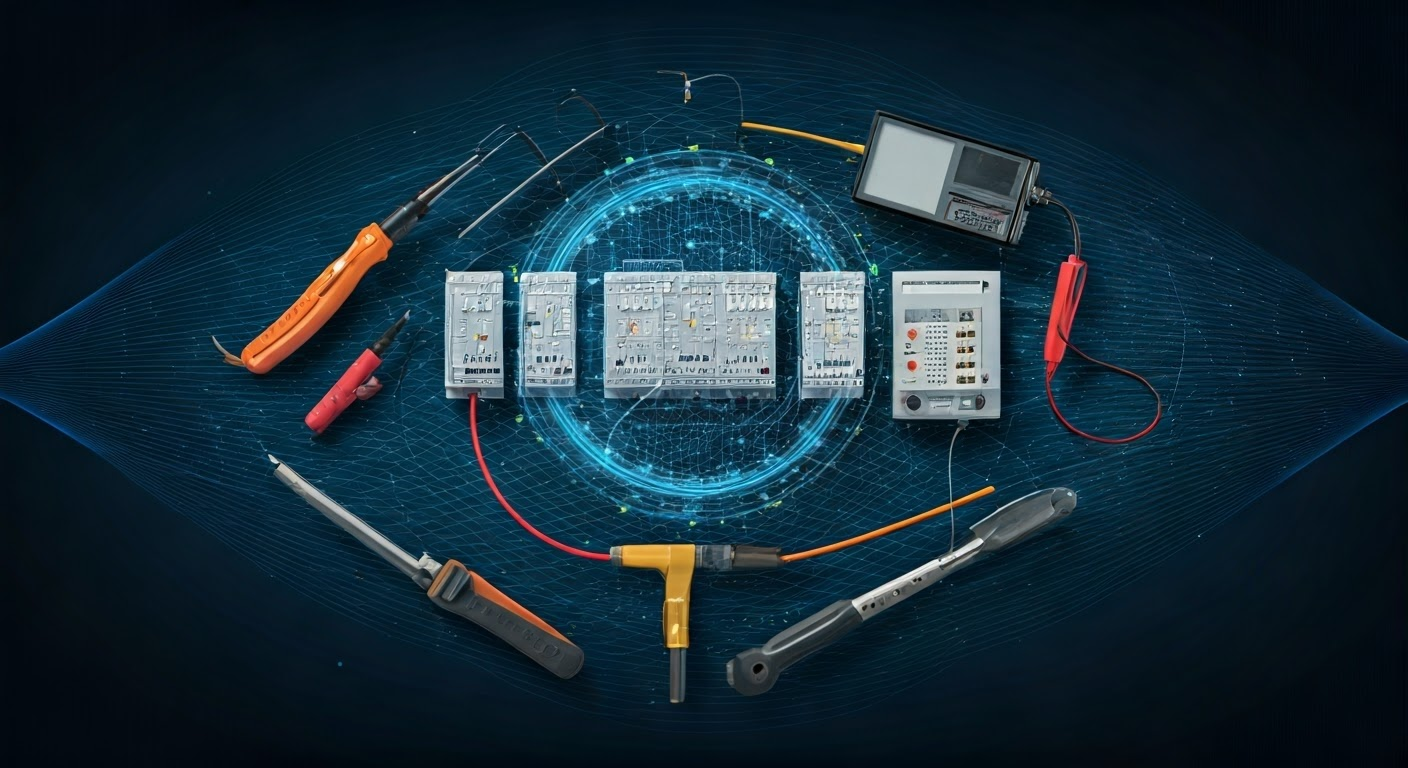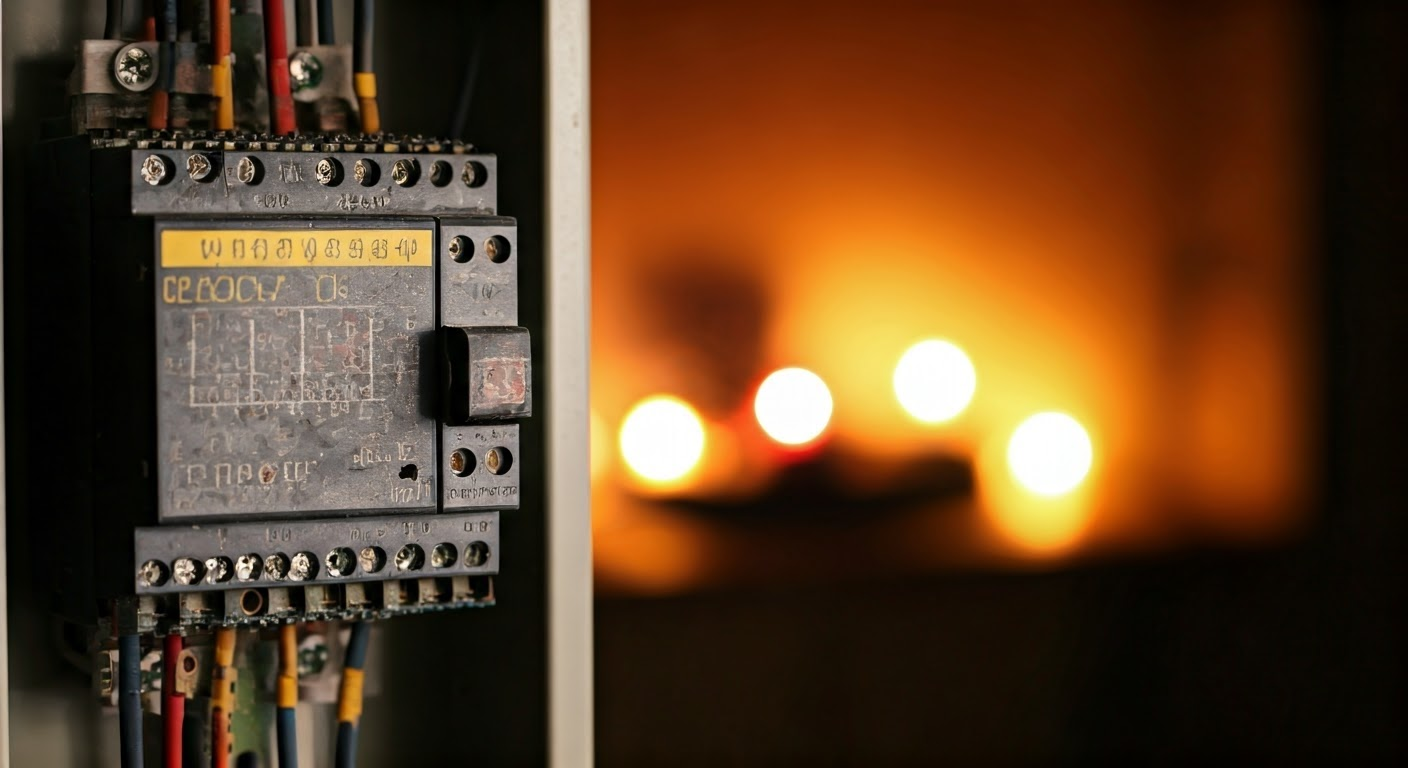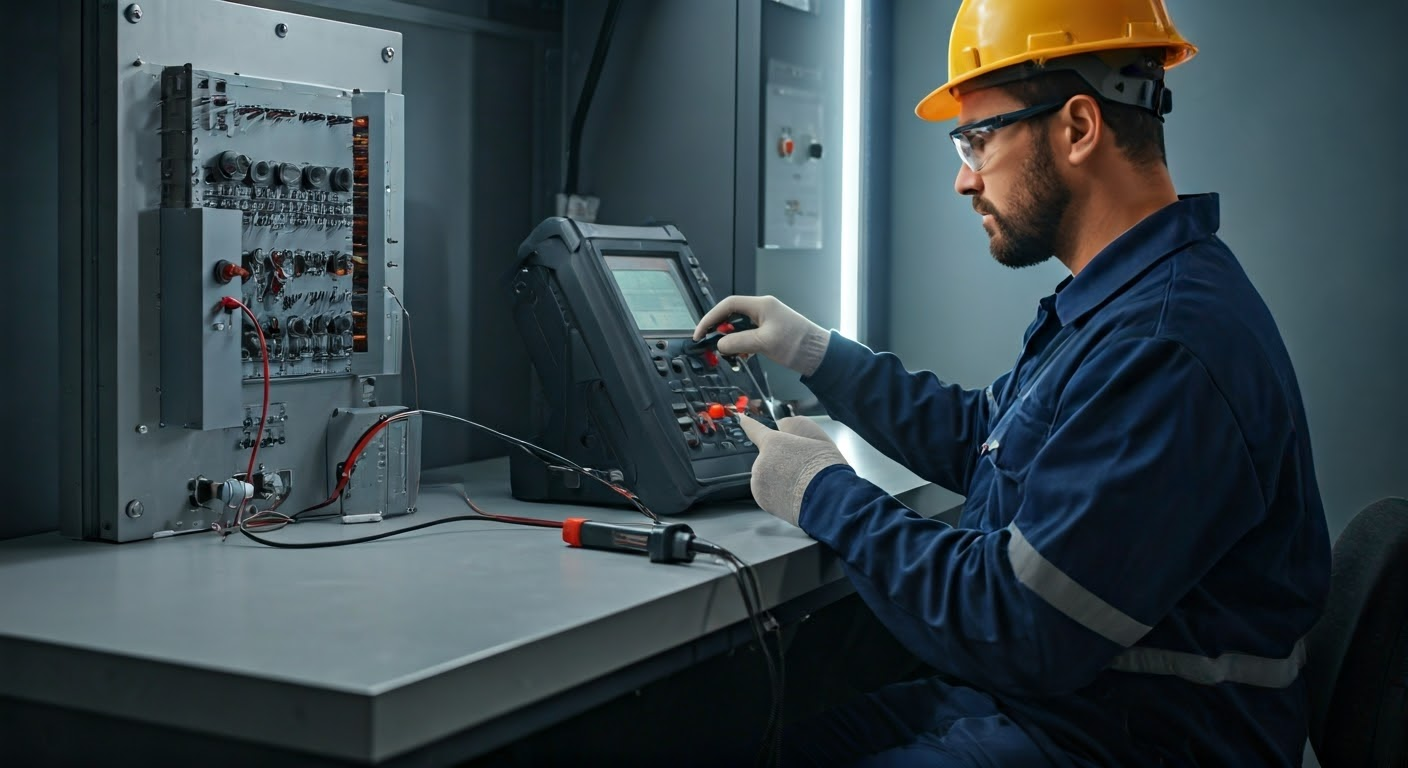What are the common signs that indicate electrical issues in a home?
Common signs of electrical issues in a home include flickering lights, tripped circuit breakers, burning smells, and warm or discolored outlets. Additionally, if appliances frequently malfunction or there are buzzing sounds from outlets, it’s crucial to seek professional assistance to ensure safety and prevent further damage.

Key Highlights
- Understand how to perform precise electrical troubleshooting & diagnostics, ensuring safety and efficiency in identifying issues within your home’s or office’s electrical system.
- Identify symptoms of panel and wiring issues
- Use precise diagnostic tools for accurate results
- Apply tailored repairs for terminals and components
- Perform regular inspections and corrosion prevention
Master key signs of faulty panels and avoid costly risks by protecting your home and safety. Boost your skills in advanced diagnostics using multimeters, sensors, and more. Implement targeted repairs and preventive care for lasting system health. Effective Electrical Troubleshooting and Diagnostics is critical. Expert Electrical Troubleshooting and Diagnostics delivers reliable, long-term safety and performance.
Introduction
Electrical troubleshooting and diagnostics are important to keep your electrical system working well. You will need this at home or in your office. Learning how to spot and fix problems can save you time, stop hazards, and help your system last longer. You may need to check your electrical panels, find voltage problems, or sort out wiring troubles. With a professional way of doing things, you can get through even the hardest problems quickly and safely. If you use smart steps and the latest diagnostic tools, you can get a dependable fix for your electric system.
Identifying Common Electrical Issues in Homes and Offices

Electrical troubleshooting and diagnostics problems at home or at the office can be small annoyances or big safety risks. If you see lights flicker, breakers trip a lot, or outlets don’t work, these are warnings that something is wrong. There might be old wiring, too much load on a circuit, or old and rusted terminals. Taking care of these problems as soon as you can helps keep your electrical system safe and working well. This way, they do not mess up your daily tasks.
In the office, things like computer systems and heavy machines put extra stress on the electrical system. This can cause voltage to drop or fuses to blow. If you check things often and use good diagnostics, you can catch problems before they get worse. If you know the warning signs and fix trouble fast, you will keep your work going and protect what you have. This also means you can stop losses to productivity and avoid surprises that cost you money.
Symptoms of Faulty Electrical Panels
Faulty panels often show warning signs that shouldn’t be ignored. If your circuit breaker frequently trips, it may indicate the panel is overloaded or malfunctioning, unable to support your power needs. Buzzing sounds or unusual heat from the panel box are clear alerts of potential hazards that require immediate attention.
During a visual inspection, look for damage, burn marks, or corrosion on circuit breaker switches and terminals. These signs often mean the panel is aging or nearing failure. Such issues can cause irregular power flow, leading to wiring problems or damage to devices connected to your system.
Ignoring these warning signs can escalate risks, potentially causing complete system failure or even fire hazards. Effective Electrical troubleshooting and diagnostics are essential to identify the root causes quickly and accurately. Using advanced diagnostic tools and skilled technicians ensures precise detection of faults before they worsen.
Early intervention through professional electrical troubleshooting & diagnostics not only protects your property but also extends the lifespan of your system, ensuring safety and reliable operation for years to come. This makes repairs easier and helps keep your panel working well over time.
Effective Diagnostic Techniques for Electrical Wiring Troubleshooting
Electrical troubleshooting and diagnostics techniques find all the electric problems. There be simple ways to do this. People often use tools like multimeters and sensors. These can measure voltage, resistance, and how well connections in wiring work. With tests like voltage drop checks and looking for breaks, you can spot problems in the wiring or parts. This—and quick repairs after—helps a lot.
OBD devices enhance modern electrical troubleshooting and diagnostics by delivering precise fault codes. These insights help professionals quickly pinpoint issues, ensuring your system operates safely, efficiently, and up to code—ideal for newer home systems requiring fast, accurate problem-solving and long-term reliability.
Fuses & Multimeter Mastery: Electrical Safety for Older Homes in Contra Costa & Solano Counties
Expert Electrical Troubleshooting and Diagnostics
Many older homes in Benicia, Concord, Martinez, Pinole, and Antioch still use outdated fuse-based electrical systems from before the 1970s. These systems not only pose fire risks and fail modern code standards—they’re also making it nearly impossible to secure home insurance or sell the property. Insurance companies are now denying coverage to homes without updated electric panels. Our full rewiring services replace old fuses with safe, code-compliant breakers. Using multimeters and expert diagnostics, we modernize your system—improving safety, boosting home value, and making your property insurable and market-ready again.
Utilizing Advanced Tools for Accurate Diagnostics
Modern diagnostic tools help find electrical problems with great accuracy. A multimeter lets you measure voltage, do resistance checks, and test for continuity. This makes it easy to spot voltage drop, weak battery, or other battery voltage issues in wiring or circuits. Sensors in the system pick up heat or energy spikes, showing you if something is not right.
Key tools include:
- Multimeters to check for voltage drop and see if the battery is in good shape.
- Onboard Diagnostic (OBD) hardware to get fault codes from new electrical systems.
- Infrared sensors for clear heat images of wiring and parts that might be under stress.
Modern diagnostic tools streamline troubleshooting by quickly identifying complex issues. When well-maintained and calibrated, these tools boost accuracy, improve efficiency, and ensure reliable, long-lasting solutions—essential for safe and effective system performance.
Step-by-Step Guide to Electrical Panel Testing
Testing your electrical panel needs care to get the right results. First, turn off all the devices that are connected to the panel. Next, do a visual inspection to check for any burn marks, corrosion, or loose connections. You should use a multimeter to check for voltage drop across the circuit breaker terminals. If you see a large change in voltage, this can mean there are defects in your panel.
Next, check the ampere levels at each circuit breaker to look at how energy is shared in the panel. Here is a table with the main steps:
Diagnostic Step | Testing Method | Target Result |
|---|---|---|
Voltage Drop Analysis | Multimeter Testing | 0-5% drop |
Circuit Breaker Inspection | Visual & Multimeter Checks | No heat or buzzing sound |
Amperage Measurement | Clamp Meter Testing | Balanced load across breaks |
Regular visual inspection of the panel with these steps helps keep your system safe, working well, and stops big repair bills.
Tailored Electrician Solutions to Electrical Problems
Custom solutions are key to resolving system issues in homes and offices—like damaged wiring, faulty fuses, or corroded terminals—ensuring long-term safety, performance, and compliance with today’s standards.
With advanced diagnostics tools and expert methods, solutions can fit what each setup needs. Sometimes it is about making parts stronger, and other times it means putting in new panels. These special techniques make the system safer, help things work better, and lower the time people wait for repairs.
Customized Repairs for Specific Electrical Issues
Specific problems like frayed wiring or rusty terminals need special repairs to keep the system working well. Finding these issues with the right tools makes it easy to spot each problem area quickly. This often means taking out bad wiring and putting in stronger, high-grade wiring that uses waterproof connectors.
Electrical components like circuit breakers need special care, too. When parts are stressed, you may have to smooth them out, swap old parts for new ones, or fix their connections to help them work at their best. Better insulation on wiring also helps keep things safe from too much heat or water getting in.
It is important to have both the right certifications and experience when fixing complex jobs, such as wiring with sensitive terminals or working with areas where voltage is distributed. Getting help from the right pros means the work lasts longer and there will be fewer repairs later on.
Preventative Measures to Avoid Future Electrical Failures
Preventing electrical failures starts with regular upkeep. You need to check all terminals for signs of corrosion. It is good to tighten any wiring that is loose. Put some dielectric grease on parts that are out in the open. Looking at everything often helps you find problems early, before they turn into something big.
During service times, test all relays and circuit breakers. If you see that a part is getting worn out, swap it for a new one. Make sure the wiring inside is strong and not broken. Wet places are risky, so use waterproof covers there.
Consistently following these steps reduces breakdowns and extends the lifespan of your vital systems, ensuring reliable performance and minimizing costly repairs over time.
Why Choose Our Expert Electrical Troubleshooting and Diagnostics Services

Choosing skilled professionals for troubleshooting and diagnostics is crucial for accurate issue detection and lasting repairs. Our certified technicians follow strict safety protocols to ensure every inspection is thorough and reliable.
With years of experience quickly resolving complex problems, we provide trustworthy inspections and effective solutions that protect your property and keep your systems running smoothly every time. Our knowledge and commitment to safety give you peace of mind knowing your home or office is in expert hands.
Certified Professionals and High Safety Standards
Safety is a top priority in all our diagnostic work. Our certified technicians are trained to identify high-voltage risks and handle complex terminal setups with precision. Following stringent certification requirements, they perform accurate tests using advanced voltage calibration tools, reducing breakdowns and preventing accidents.
When experts manage your system, you can trust it will operate safely and meet all current safety standards. This dedication to quality not only enhances system reliability but also safeguards your investment.
Proven Track Record with Client Testimonials
Our clients consistently praise our professionalism and reliability. We’re known for quickly diagnosing and fixing tough issues before they escalate, saving time and money.
From homes to offices, we’ve restored countless systems to optimal performance with transparency and care. Our open communication builds trust and ensures customers feel confident and satisfied with every project.
Conclusion
To sum up, the right electrical troubleshooting and diagnostics help keep your home or business safe and running well. If you can find common electrical problems early and use modern ways to solve them, you can fix things before they get worse. These smart steps not only solve the problem, but also make it easier to stop issues from coming back. The work of our certified professionals follows strong rules of safety and trust. If you want your electrical systems to work the best they can, set up a meeting with us today. We will talk about what you need and give you advice from the experts.
Frequently Asked Questions
Why is electrical troubleshooting and diagnostics important?
Electrical troubleshooting and diagnostics help prevent hazards like fires, protect devices, and maintain reliable operation of your electrical system.
What are the common signs that indicate the need for electrical troubleshooting and diagnostics?
Flickering lights, frequent breaker trips, warm or discolored outlets, buzzing sounds, and malfunctioning appliances signal the need for electrical troubleshooting and diagnostics.
How are faulty electrical panels detected during troubleshooting and diagnostics?
Certified technicians use visual inspections, multimeters, and sensors to detect signs like heat, corrosion, burn marks, or irregular voltage in electrical panels during electrical troubleshooting and diagnostics.
What tools are used in electrical troubleshooting and diagnostics?
Multimeters, infrared sensors, onboard diagnostic (OBD) devices, and clamp meters are commonly used for precise electrical troubleshooting and diagnostics.
Can electrical troubleshooting and diagnostics prevent major electrical failures?
Yes, regular electrical troubleshooting and diagnostics identify potential issues early, allowing for preventive repairs that reduce costly breakdowns and hazards.
Are electrical troubleshooting and diagnostics necessary for older homes?
Absolutely. Older homes with outdated wiring or fuse systems benefit from electrical troubleshooting and diagnostics to ensure safety, compliance with modern codes, and system reliability.
How often should electrical troubleshooting and diagnostics be performed?
Regular inspections, at least once a year, or whenever you notice warning signs, are recommended to keep your system safe and efficient.


